Loughborough University was one of the few universities running a four-year MEng course in building services engineering. However the course, which started in 1995, is now being discontinued, with the last intake in 1999. The reason? According to Dr Dennis Loveday "there were simply not enough people applying to do building services engineering at undergraduate level. We felt that the market had really shifted towards conversion courses." This means Loughborough will not be running an undergraduate course in building services engineering, and is putting its efforts into a new masters course. "It's an unusual situation in that there's a great demand by industry for these graduates but the problem is there aren't sufficient young people who have heard of building services engineering or who are made aware of it" says Loveday. "This is a national problem and hopefully things will improve with more publicity for the discipline, particularly at school level".
The university developed its MSc in building services engineering to target graduates from mechanical engineering-type degrees who want to go into the building services sector. The course is currently in its first year with eight students, seven of them sponsored by industry, with 10 on-line for next year.
Colin Page (pictured above, far left) studied a four-year MEng degree in mechanical engineering at the University of Nottingham and is now studying part-time on the course at Loughborough while working for Oscar Faber. "I had no experience in the services industry as, to be honest, I had never considered it as a possible career until my final year when it came to applying for graduate jobs" he explains. "I wanted to apply my engineering skills in an interesting field, while working for a well respected company".
Colin found out about the MSc and Fabers through an open evening and the course, which was part of their offer, was a deciding factor in him accepting the job. The course consists of nine one-week study blocks plus one research project and a design project. "It's very relevant to my day-to-day work and vice versa, but as with any course fitting in study and coursework around work has proved tricky, but once into a routine it can be done" he says.
Although the SARTOR requirements did not apply directly to Colin he disagrees with the requirement for a masters, "I believe it unnecessarily excludes potential engineers who may be very good at their job but decide not to do an extra year at university. – four or five years in a place of work leads to a better engineer than one extra year doing exams." South Bank University currently run a BEng (Hons) building services engineering course and a post graduate MSc course.
Course director, Tim Dwyer, says they have managed to keep their student numbers to within 7% of their target this year and are currently working on matching sections for both their HND and BEng (Hons) courses. He explains: "An area of increasing demand has been in the provision of distance learning material so that companies can maintain their skills base without the overheads and constraints of attending a traditional college course". To this end South Bank has received a £250 000 EPSRC grant to develop material.
The MSc in building services engineering is aimed at converting graduates to the discipline of building services engineering. There are ten full-time and 20 part-time students enrolled on the MSc.
There’s a great demand by industry for these graduates, the problem is there aren’t sufficient young people who have heard of building services engineering or who are made aware of it
Bob Limon is a student on the course. He left college at 22 with a TEC higher diploma in oil exploration just as a world recession made oil almost worthless. He went to work on building sites, moving up in the building services department. "Having been in the industry for around 18 years I had reached as far as I could and the only way I could progress was by becoming Chartered" he says. "I cannot afford the time to do a part-time degree so I decided to go for an MSc and then follow the mature candidate route to being accepted by CIBSE".
He feels the course content of the MSc is very good, with plenty of technical content and help in designing and choosing equipment. "Maintenance is an area that could be improved – a lot of my previous work has included the writing of maintenance contract specifications" he adds. Bon also believes it would be useful to look at recreational buildings such as swimming pools and large gymnasiums, as well as the writing of specifications and the various contracts that are available.
UMIST runs a four-year MEng course in building services engineering. There are currently around 40 students on the course, mostly made up of school and college leavers some of whom are sponsored and doing a 'year out' in industry. With the fourth year coming in numbers will increase, however Dr Geoff Levermore, says "numbers are not as high as the mid '90s, engineering is not perceived as a cool subject to study by teenagers and building services is little understood".
Now in his final year of a building services BEng (Hons) course at UMIST, David Chow (pictured page 29, on the right) didn't originally intend following a career in building services. After taking a year out following his A-levels he went on to do a degree in architecture at Bath University. "I've always been interested in buildings and how they work …however I found that the only parts [of the architecture course] that I enjoyed were the environmental and indoor climate modules." Deciding that this was the field that he wanted to pursue he enrolled on a building services engineering course at UMIST. "I didn't want to do another undergraduate course and instead wanted to do a masters in environmental engineering. However since I didn't have an engineering degree I was told it would be difficult for me to reach Chartered status" says David. "Since this was the main goal for me I decided to spend two years getting a BEng at UMIST".
David feels that the course at UMIST covers a broad range of topics relevant to the work he will eventually be doing in industry. But he would like to see a greater emphasis on the electrical side "it seems the course (and maybe industry as a whole) is slightly more mechanically biased". Another thing he thinks should maybe be incorporated would be some large projects involving architect and civil engineering students. "If different departments are willing to encourage this kind of interaction between disciplines in universities, then this trend will continue in industry," he comments.
David foresees further reductions in the number of students enrolling on building services courses as a result of the new academic requirements set out by the Engineering Council. "Already there are not many universities that provide this course. It may be necessary to employ mechanical or electrical engineering graduates, who may not have had a specific insight into building services engineering." he says.
David's goal is still to become Chartered, however he is not eager to do this straight away and is instead considering doing a PhD.
Changing times
The number of home students enrolling on undergraduate courses as a whole has doubled between 1989 and 1999. However the number of home acceptances to engineering courses, which peaked in 1993, has been falling over the last three years with acceptances in 1999 only 6% higher than ten years ago. Compare this for example with admissions to computing subjects which have increased nearly three-fold over the same period. In 1997 the Engineering Council published a number of changes to the Standards and Routes to Registration (SARTOR) aimed at strengthening the academic requirements for those wanting to attain Chartered and Incorporated status. As of September 1999 the academic base for reaching Chartered status required four years academic study, met by an accredited MEng degree or a 3-year accredited BEng (Hons) degree plus a matching section (equivalent to one further year of academic study to achieve equivalence with MEng graduates, via full or part time post graduate courses, distance tuition and work based learning). Incorporated Engineer status now requires three years academic study in the form of an accredited IEng degree or a two-year HND again followed by a matching section. The introduction of entry standards into criteria for accreditation of courses was also to be ramped in over a four-year period. Although many in the industry agree that there is a need to raise the standard of engineering across the UK there are also concerns that the introduction of these changes will exclude many capable students and result in more course closures.Source
Building Sustainable Design
Reference
1 Projections of Occupations and Qualifications: 1999/2000, Institute for Employment Research, Warwick University, in collaboration with Cambridge Econometrics, for the DfEE, June 2000, in support of the National Skills Task Force. Visit www.skillsbase.dfee.gov.uk/Reference/Reference.asp?sect=5.



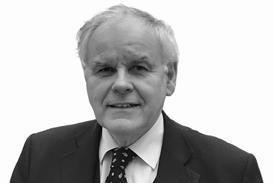






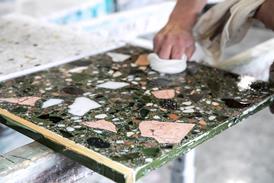
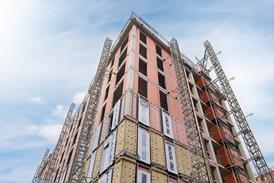
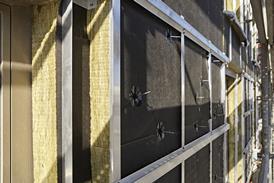


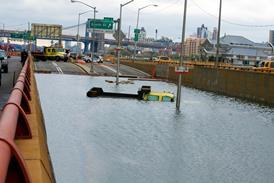





No comments yet